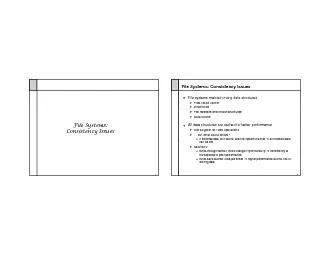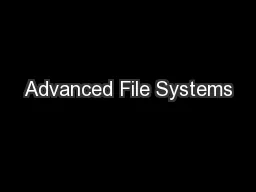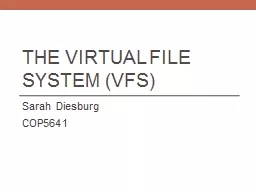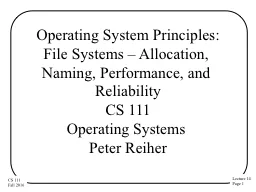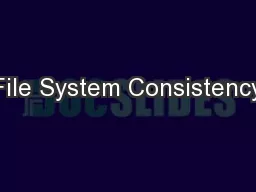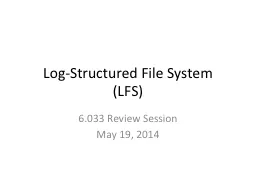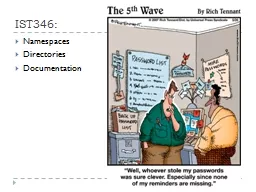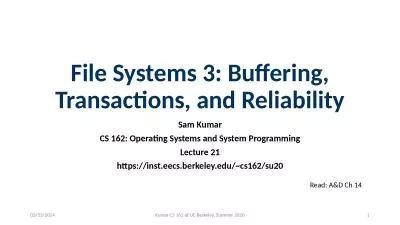PDF-File Systems Consistency Issues File systems maintain many data structures Free listbit
Author : luanne-stotts | Published Date : 2014-12-26
Data consistency Asynchronous writeback for user data Write back forced after fixed time intervals e g 30 sec Write back forced after fixed time intervals eg 30
Presentation Embed Code
Download Presentation
Download Presentation The PPT/PDF document "File Systems Consistency Issues File sys..." is the property of its rightful owner. Permission is granted to download and print the materials on this website for personal, non-commercial use only, and to display it on your personal computer provided you do not modify the materials and that you retain all copyright notices contained in the materials. By downloading content from our website, you accept the terms of this agreement.
File Systems Consistency Issues File systems maintain many data structures Free listbit: Transcript
Download Rules Of Document
"File Systems Consistency Issues File systems maintain many data structures Free listbit"The content belongs to its owner. You may download and print it for personal use, without modification, and keep all copyright notices. By downloading, you agree to these terms.
Related Documents

